
What to see in Baños de la Encina? To answer this question we must move to lands of the Sierra Morena region, In full Sierra de Andújar Natural Park which, in turn, is to the north of the province of Jaén.
Considered one of the most beautiful towns in Spain, Baños de la Encina barely has two thousand five hundred inhabitants. But combines a beautiful monumental complex with dreamy surroundings. As if all this were not enough, in its municipal term is the mining town of The Centenillo, genuine example of industrial architecture. So that you have a guide to all of this, we are going to explain what to see in Baños de la Encina.
Burgalimar castle

Burgalimar castle
We begin our tour of the town in the imposing Burgalimar castle, which dominates it from a hill. It is an Umayyad fortress from the XNUMXth century that is one of the best preserved in all of Spain. To give you an idea of its dimensions, we will tell you that it has an oval plan, with an area of almost three thousand square meters.
Its outer wall has fourteen towers califal-style squares to which is added the tribute, built in the fifteenth century by Christians. All of them have battlements. Two large doors allow access to the interior. The main one is magnificent, located precisely between two towers and crowned by a machicolation or cantilevered roof.
Little remains of the interior apart from the keep. However, it is known that it housed a small alcazar circular surrounded by another interior wall that separated in two the Main Square. Also, as an anecdote, we will tell you that this fortress is known as "the one of the seven kings". The reason is that they went through it at some point Alfonso VII, Alfonso VIII, Alfonso IX, Pedro II, Sancho VII, Ferdinand III the Saint (it is said that this was born in it), and Ferdinand the Catholic. Since 1931 it is listed as National Monument.
Church of San Mateo and other religious monuments
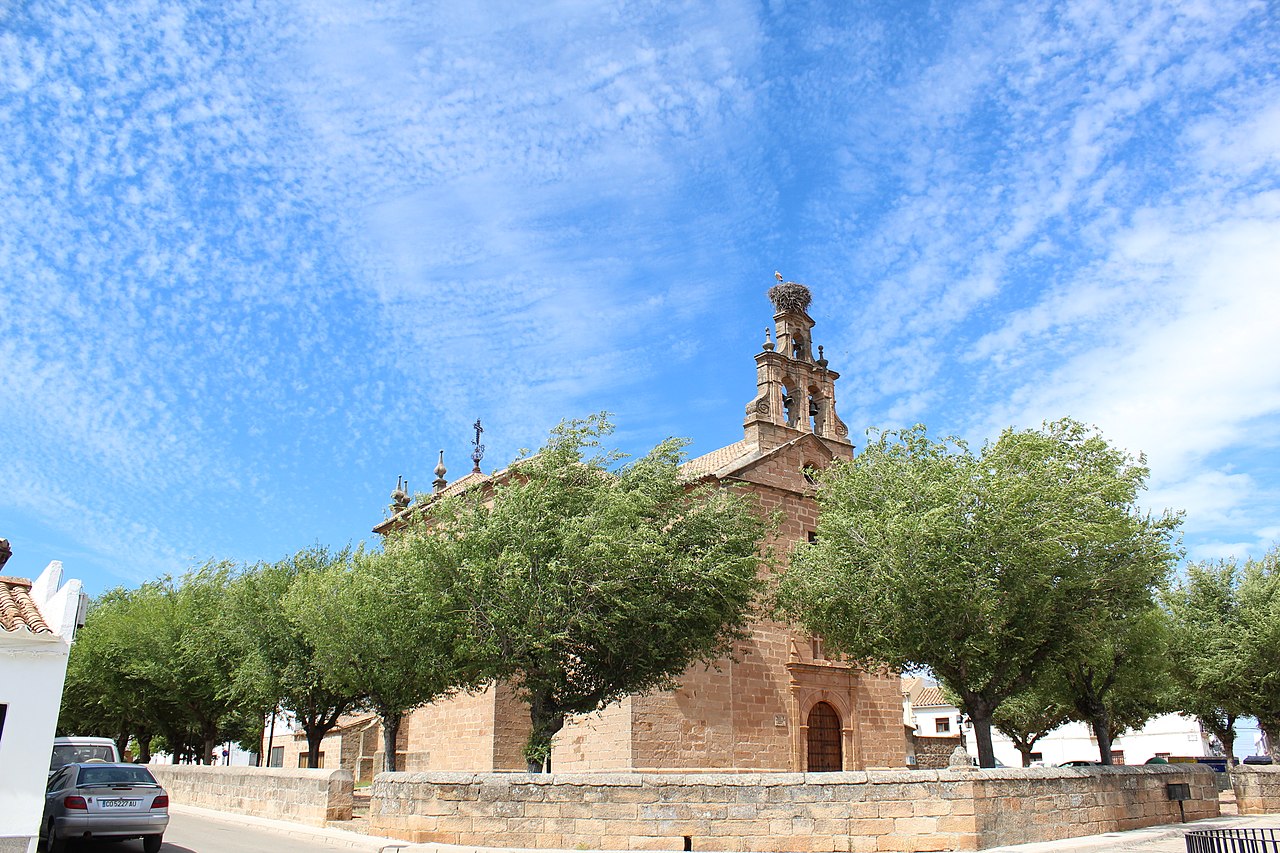
The beautiful hermitage of Cristo del Llano
The religious heritage of Baños de la Encina is also spectacular. The parish church of San Mateo It is a XNUMXth century marvel combining Gothic and Mannerist styles. Its spectacular octagonal tower with three bodies and crowned by pinnacles stands out.
On the other hand, its interior, no less majestic, stands out for its baroque elements. Among these, the presbytery and the transept with its semicircular dome topped with a lantern, which is the work of Peter of Saint Joseph in the XVIII century. Likewise, we advise you to look at the choir made of walnut wood and the tribune that was used for the high officials of the feared Inquisition. But, above all, the precious urn of the tabernacle made with ebony, tortoiseshell and ivory and the paintings, which are attributed to the school of Bartolome Murillo.
The religious heritage to see in Baños de la Encina is completed by several hermitages. the one of the Virgin of the Oak It is located between olive trees and next to one of these trees where, according to legend, he appeared to a peasant. Near her is the hermitage of Jesus del Camino, while of that of Santa Maria del Cueto only a few remains remain.
But more artistic value has the hermitage of Cristo del Llano. It is a small XNUMXth century temple with austere forms. However, its interior reserves a spectacular surprise for you. In its majestic polylobed vault on tubes, it houses a dressing room or small chapel Tower type and of extraordinary beauty. genuinely baroque, next to the figure of Christ you can see recreations of the Immaculate Conception, saints, evangelists, religious allegories and even figures of vegetables, fruits and birds made in stucco.
Other monuments to see in Baños de la Encina
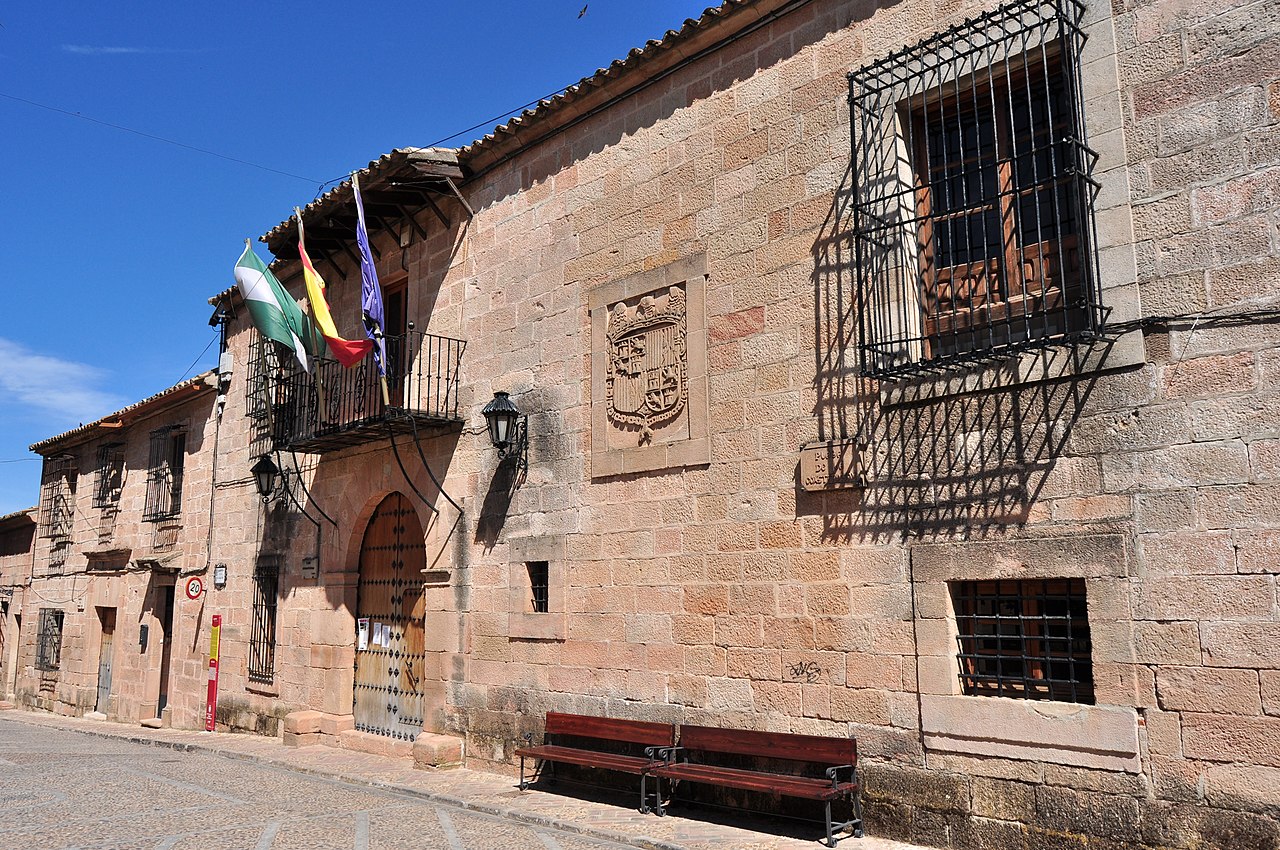
The Town Hall of Baños de la Encina
Along with all the wonders that we have shown you, you have other interesting constructions to see in Baños de la Encina. It is the case of your Santo Cristo windmill, which is located in the upper part of the villa and is dated from the XNUMXth century. It has been rehabilitated and today houses the exhibition stories to the wind created by Jose Maria Cantarero and dedicated to these buildings.
Equally beautiful is the Town hall, a beautiful Renaissance construction with the emblem of the Habsburgs on its façade. Its entrance also stands out, a door with a semicircular arch under a balcony with a roof. Large windows with bars complete this magnificent ashlar construction.
It is not the only manor house in the town. In fact, there are many of those built between the XNUMXth and XNUMXth centuries. As a sample of them, on Trinidad street you have the houses of Caridad Zambrano, of the Salcedos, of the Pérez Caballeros, of the Galindos and, next to the suburb of the basket makers, that of the notary Guzmán.
Town of Peñalosa
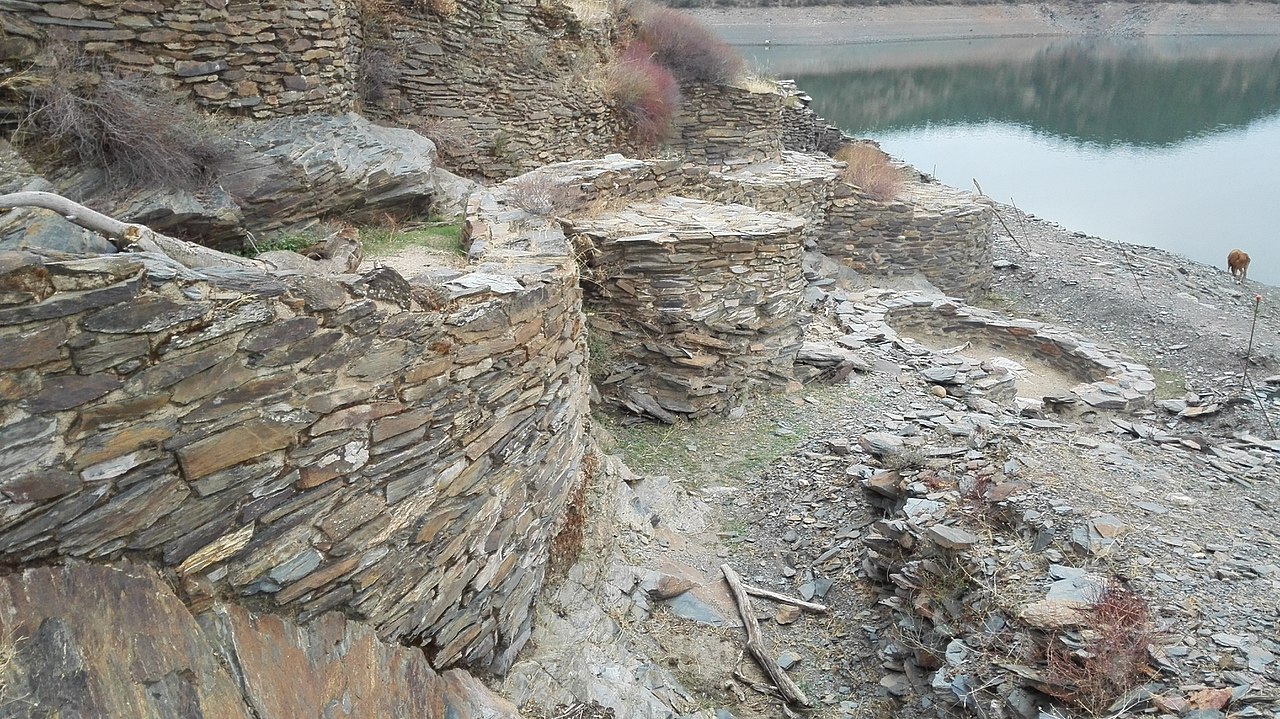
View of the Argaric town of Peñalosa
Once we have shown you what to see in Baños de la Encina, we move to its surroundings, which also offer you very interesting places. It is the case of the mining towns of Los Guindos and El Centenillo, which we have already mentioned. And, likewise, of oppidum or Roman village of Galiarda rooms and the shelters with cave paintings of Canjorro de Peñarrubia, El Rodriguero and Barranco del Bu.
But, above all, of town of Penalosa, dated in the Bronze Age. More specifically, it belongs to the argaric culture, which flourished between 2200 and 1500 BC. It was raised in terraces on two large slopes that limit to the north with the rumble river and to the south with the Salsipuedes stream. Likewise, at present it has been partially flooded by the Rumblar reservoir.
However, you can still visit a good part of it. According to archaeological investigations, it was an important nucleus for the extraction and processing of copper from Sierra Morena. It is made up of rectangular houses built with slate that form narrow streets. A wall protected the town, which also had a water cistern. Also, in the upper part there were watchtowers and defensive bastions.
Rumblar Reservoir
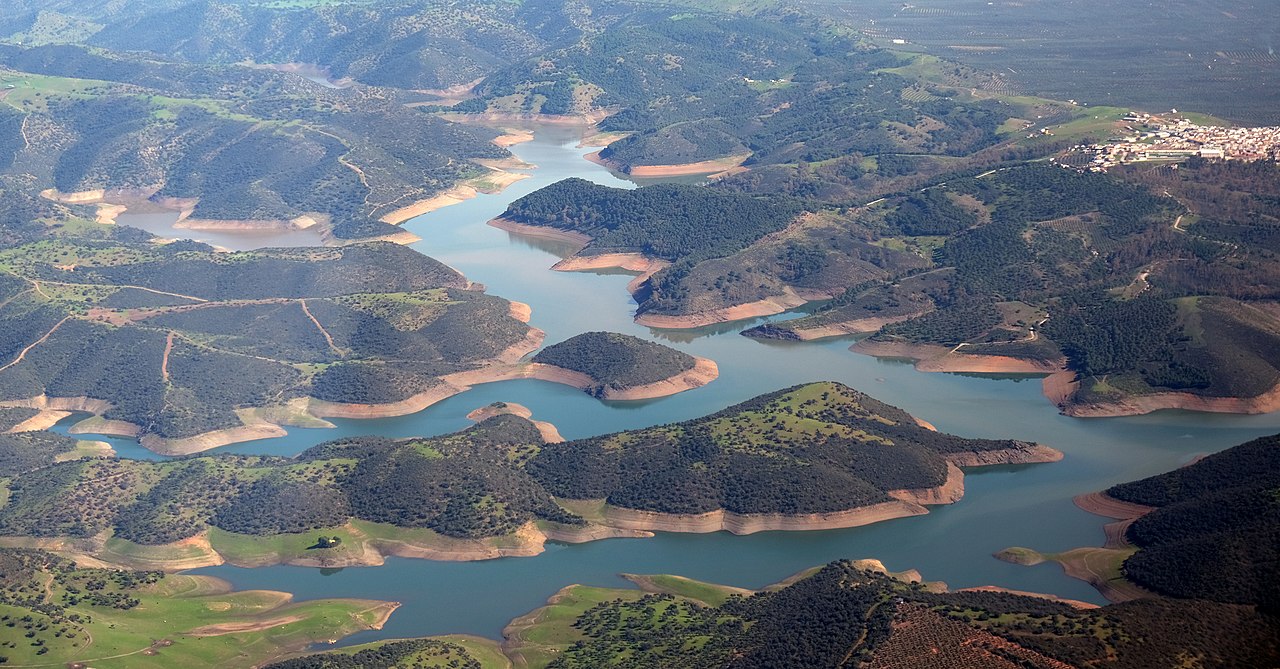
Beautiful panoramic view of the Rumblar reservoir
If the historical and artistic heritage of Baños de la Encina is interesting, perhaps even more so is its natural environment. We have already told you that the Rumblar reservoir partially covers the town of Peñalosa. But you should also know that it forms a wonderful landscape, with its large dimensions.
It is surrounded by hills of Mediterranean forest with holm and cork oaks. It has been listed as Place of Community Interest because in its surroundings live the Iberian lynx, the fox, the otter and other species of mammals. Different species of birds of prey such as the golden and imperial eagle, the black stork and the griffon vulture also abound in the area.
Furthermore, if you visit it at the end of September or beginning of October, you can observe the curious spectacle of the rutting deer. On the other hand, you can also enjoy activities related to water in the reservoir. On one of its shores is the call Tamujoso beach, whose surface is slate and which offers you the shade of pines and eucalyptus trees. You can take a bath and also practice canoeing and sailing.
Sierra de Andújar Natural Park
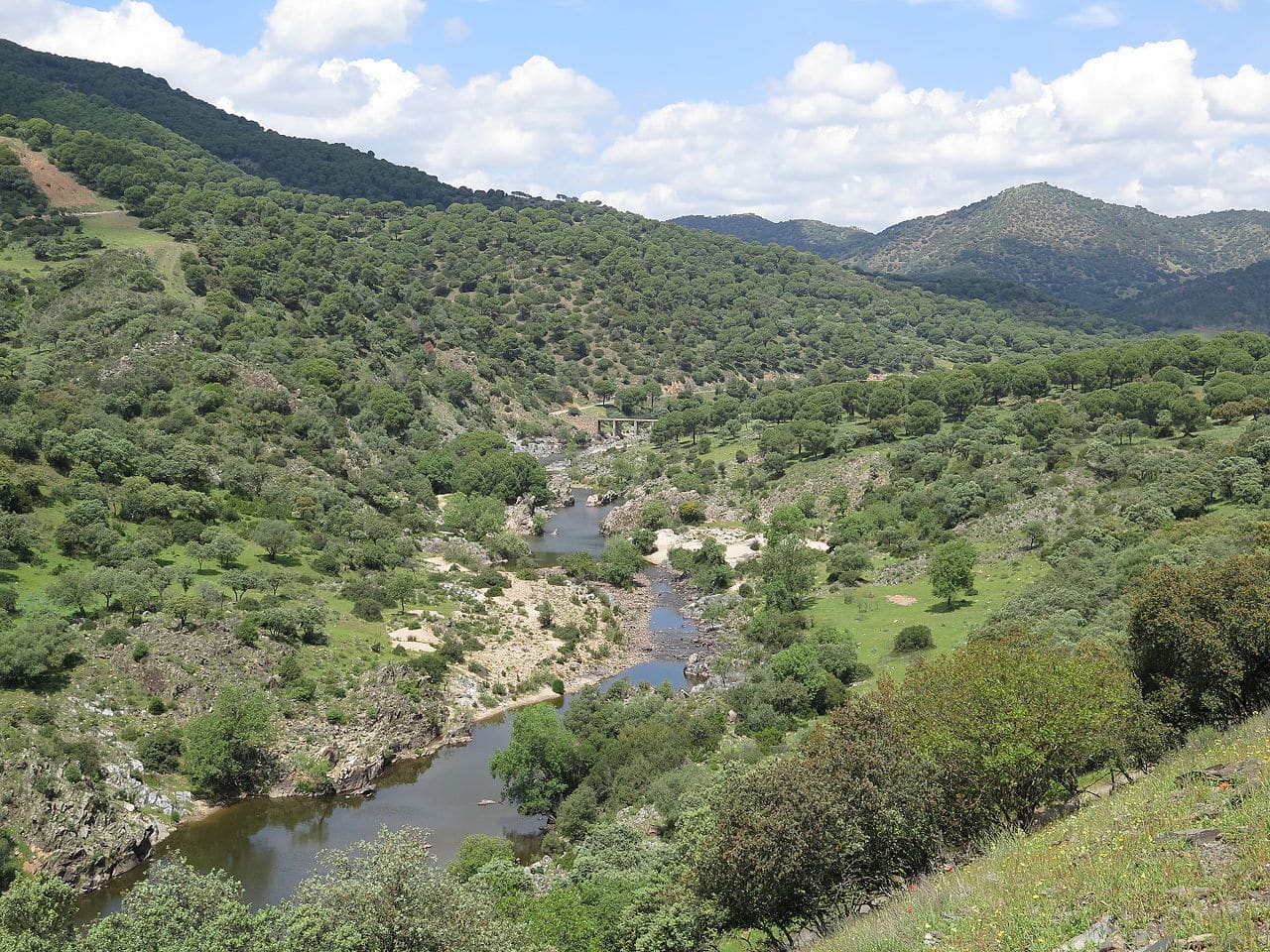
The Sierra de Andújar Natural Park
As we told you, Baños de la Encina is in full Sierra de Andújar Natural Park. It is an area of almost seventy-five thousand hectares with a triangular shape. It also covers other municipalities such as the Andújar, Villanueva de la Reina y Marmolejo. Also, in the first of them is the Basilica of Our Lady of the Head, to which pilgrims from all over Spain arrive on the last weekend of April.
We recommend that you also visit this temple built at the end of the XNUMXth century, although it was reformed in the XNUMXth and then in the XNUMXth, after suffering serious damage during the Civil War. your bill is gothic and houses the image of the patron saint of Andújar. It also houses a magnificent sculpture of the Sacred Heart and another of the dying Christ, both from Mariano Benlliure.
But, returning to the wonders that this natural park offers you, we will tell you that it has enormous botanical and faunal value. You can tour it in Mountain bike, since two sections of the Long Distance Trail GR48 o Sendero de Sierra Morena, which, in turn, forms part of the route transandalus, which crosses Andalusia. However, if you prefer to walk, the park also offers magnificent routes. Very simple is the one that delves into the meadow of Santo Cristo del Llano. A little longer is the Path of the Waters, with about six kilometers in length. It begins in the recreational area of Los Charcones and reaches the Rumblar and Peñalosa reservoir.
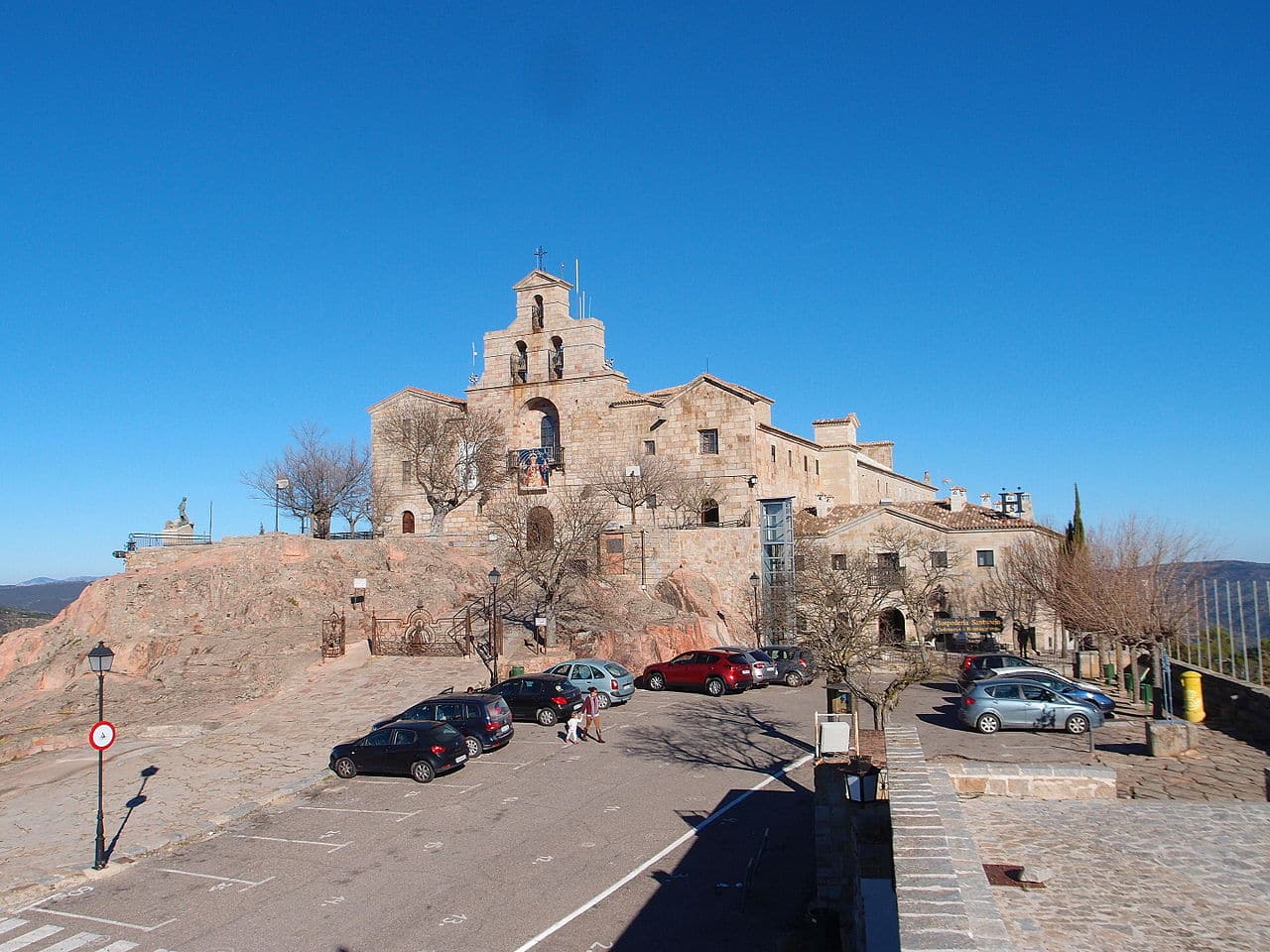
Basilica of Our Lady of the Head, patron saint of Andújar
Equally beautiful are the La Verónica and La Pizarrilla trails. The first one also passes by a site from the Argaric period and by the medieval path that linked Toledo with Sevilla. For its part, the second allows you to observe wonderful landscapes. Finally the call Bronze Route walk along the banks of the Rumblar reservoir and cross pine and eucalyptus forests, as well as the archaeological remains of the Fort of Migaldias and vermilion stone.
In conclusion, we have shown you what to see in Baños de la Encina and what to do around it. We can only recommend that you try their mountain crumbs and spoon. The latter is bread from which the crumb is removed to fill it with rubbed garlic, olive oil, salt and ripe tomato. Next, the crumb is placed back to cover it. Go ahead and discover its flavor, it is delicious.